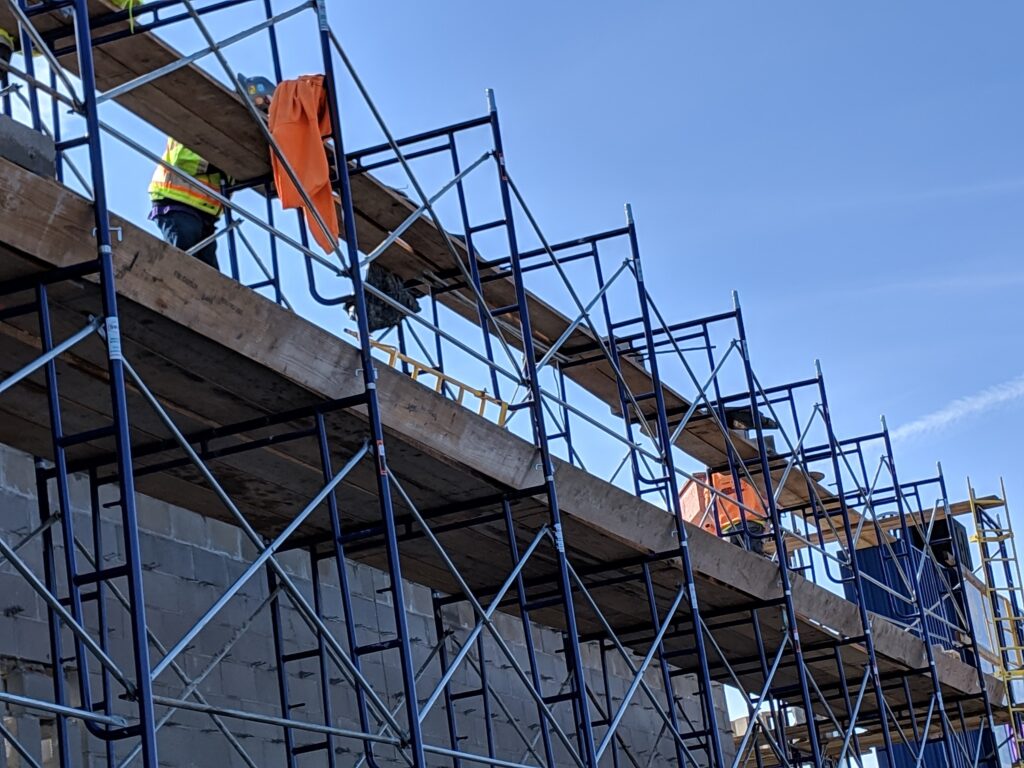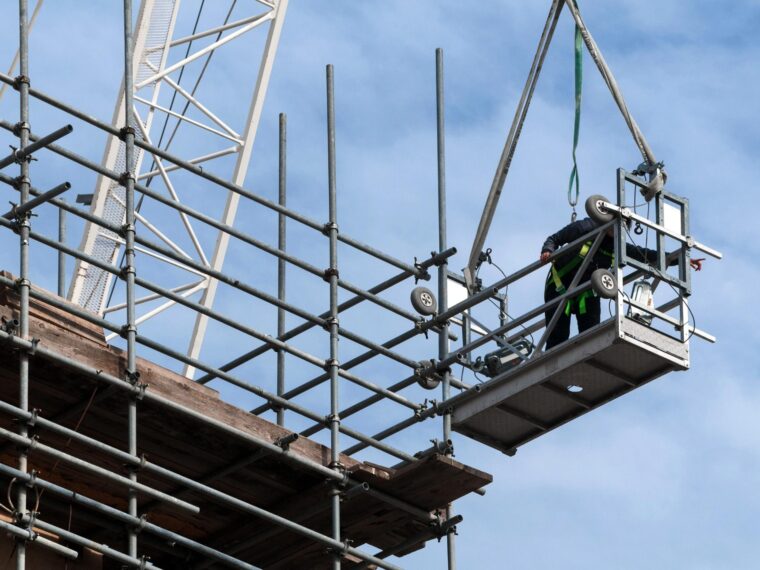Temporary scaffolding is a crucial component in construction and maintenance projects, providing necessary support and access for workers. The effectiveness and safety of scaffolding are vital for the well-being of workers and the integrity of a project. This article will guide you through choosing safe and reliable options for temporary scaffolding.
Understanding the Basics of Temporary Scaffolding
Before diving into the specifics, it’s essential to grasp the fundamental concepts surrounding temporary scaffolding. This knowledge lays the groundwork for making informed decisions regarding any scaffolding involved in your project.
In conclusion, selecting safe and reliable temporary scaffolding is essential for any construction project. By understanding the fundamentals, assessing key factors, adhering to safety standards, and choosing a trustworthy supplier, you can create a secure working environment essential for both project success and worker safety.
What is Temporary Scaffolding?
Temporary scaffolding refers to a structured framework that is built around a building or structure to provide access and support during construction, maintenance, or repair work. These structures can be made from a variety of materials, including steel, aluminum, and wood, and are designed to be dismantled once the project is complete.
Typically, temporary scaffolding is employed in various situations, from residential renovations to large-scale commercial projects. Its versatility and importance cannot be overstated, as it ensures that workers can safely reach elevated areas while also holding tools and materials needed for their tasks. For instance, in high-rise construction, scaffolding allows workers to perform tasks such as painting, window installation, and facade repairs at significant heights, all while minimizing the risk of falls or accidents.
Moreover, the design of temporary scaffolding can vary greatly depending on the specific requirements of the project. Some scaffolding systems are modular, allowing for easy assembly and disassembly, while others may be custom-built to accommodate unique architectural features. This adaptability makes temporary scaffolding an invaluable asset in the construction industry, facilitating not just safety but also efficiency in project timelines.

Importance of Safety and Reliability in Scaffolding
One of the foremost considerations when selecting temporary scaffolding is safety. Ensuring that the scaffolding is reliable can help prevent accidents that could jeopardize worker safety and cause delays or legal ramifications for contractors.
Reliability in scaffolding translates to structural integrity, ensuring that it can support both the weight of individuals working on it and the materials being handled. Regular evaluations and updated safety measures contribute significantly to creating a safe environment for construction staff. Additionally, scaffolding must be inspected frequently to identify any signs of wear or damage, which could compromise its stability. This proactive approach not only protects workers but also enhances the overall efficiency of the project, as delays caused by safety incidents can be costly.
Furthermore, training for workers on proper scaffolding use is crucial. Understanding how to safely navigate scaffolding, load materials correctly, and utilize safety equipment such as harnesses can significantly reduce the risk of accidents. Many companies invest in comprehensive training programs to ensure that their teams are well-versed in safety protocols, which in turn fosters a culture of safety on the job site. This emphasis on education and awareness is vital in maintaining high safety standards and ensuring that all personnel feel confident and secure while working at heights.
Click here to read about scaffolding mesh.
Key Factors to Consider When Choosing Temporary Scaffolding
When selecting temporary scaffolding, there are several critical factors to evaluate. Understanding these aspects will help you make a well-informed choice that prioritizes both safety and functionality.
Material Quality and Durability
The material used for scaffolding plays a significant role in its quality and durability. Common materials include steel for heavy-duty projects and aluminum for lighter applications. Each material has its benefits and drawbacks centered around weight, strength, and corrosion resistance.
In assessing material quality, consider the environment in which the scaffolding will be used as well. For instance, coastal areas may require scaffolding with enhanced corrosion resistance due to saline exposure. Additionally, the choice of material can impact the overall cost of the project. Steel scaffolding, while typically more expensive, offers superior strength and longevity, making it a worthwhile investment for projects with extended timelines or heavy loads. On the other hand, aluminum scaffolding is lighter and easier to transport, making it ideal for short-term jobs or projects requiring frequent relocation. Read more about resistance at https://www.brown.edu/Departments/Engineering/Courses/En123/CirRevFiles/Resistance2.htm
Load Capacity
Understanding load capacity is crucial; it refers to the maximum weight that the scaffolding can bear without compromising safety. Load capacity specifications must be adhered to strictly to prevent potential hazards.
Before purchasing or renting scaffolding, assess the expected weight of materials, tools, and workers, ensuring that the chosen scaffolding can handle the total load expected during operations. It is also essential to consider dynamic loads, such as workers moving or shifting materials, which can increase the strain on the scaffolding. Consulting with manufacturers or suppliers about load ratings and safety factors can provide additional assurance that the scaffolding will perform adequately under varying conditions.
Ease of Assembly and Disassembly
Another vital consideration is how easy it is to assemble and disassemble the scaffolding. Efficient scaffolding systems can significantly reduce setup time, expediting projects. Time saved in assembly translates to cost savings, making it a crucial factor for contractors.
Typically, modular scaffolding systems offer straightforward assembly, requiring minimal tools and the ability to adapt to various configurations. Choosing scaffolding that secures safely without extensive complex procedures is beneficial for efficiency. Furthermore, consider the availability of instructional materials or support from the supplier, as clear guidelines can enhance the assembly experience and ensure that safety protocols are followed. Additionally, training workers on proper assembly techniques can further mitigate risks associated with incorrect setup, ensuring a safer work environment for all involved.
Safety Standards for Temporary Scaffolding
With the above considerations established, it’s critical to keep in mind the safety standards enforced for temporary scaffolding. Understanding these regulations helps organizations ensure compliance and prioritize safety at their work sites.
Regulatory Compliance
Various regulatory bodies, such as the Occupational Safety and Health Administration (OSHA) in the United States, set stringent standards for scaffolding practices. These regulations encompass design, load capacities, and safety features that must be adhered to, ensuring protection and safety for all workers.
Before beginning a project, familiarize yourself with the applicable laws in your area and ensure any scaffolding being used adheres strictly to these regulations. This step is essential for both legal compliance and worker safety. Additionally, many states have their own specific regulations that may enhance or modify OSHA standards, so it is crucial to conduct thorough research and possibly consult with safety professionals to ensure all bases are covered. Click here to find more about adheres.
Safety Features to Look For
When selecting temporary scaffolding, it is also essential to consider the safety features offered. Look for scaffolding that includes guardrails, toe boards, and safety harness connections. These features provide additional layers of protection against falls and accidents.
Moreover, consider scaffolding systems with slip-resistant surfaces and integrated features such as locking mechanisms that prevent unintentional disassembly. Implementing these safety measures significantly enhances workplace security. Additionally, regular inspections and maintenance of scaffolding components can prevent wear and tear that may compromise safety. Training workers on the proper use and inspection of scaffolding is also vital, as it empowers them to recognize potential hazards and take proactive measures to mitigate risks. This comprehensive approach to safety not only protects workers but also fosters a culture of safety awareness within the organization.

Maintenance and Inspection of Temporary Scaffolding
Even after selecting the best temporary scaffolding, ongoing maintenance and regular inspections are necessary to ensure its continued safety and reliability. This practice can help identify potential problems before they become serious hazards. The importance of scaffolding maintenance cannot be overstated, as it not only protects the workers using the structure but also minimizes the risk of costly project delays due to accidents or equipment failure.
Regular Inspection and Maintenance Practices
Establishing a proactive inspection schedule is essential. Inspections should occur daily before usage, as well as at regular intervals to ensure continued safety. During inspections, look for signs of wear, damage, or rust, and address these issues immediately. It’s also beneficial to involve a qualified safety officer or a scaffolding expert during these inspections, as they can provide a more thorough assessment of the structure and identify issues that may not be immediately visible to the untrained eye.
Creating a maintenance log can also be beneficial, documenting inspections, repairs, and any modifications made. This log serves as a useful reference for ongoing safety evaluations and regulatory compliance. Moreover, it can be instrumental in training new employees, as they can review past maintenance issues and understand the importance of vigilance in scaffolding safety.
Identifying and Addressing Common Scaffolding Issues
Common issues may include wooden planks that have splintered, loose fittings, or bent metal frames. Addressing these problems promptly is crucial to maintaining the integrity of the scaffold structure. Replace damaged components immediately and follow standard protocols for repairs. Additionally, consider the environmental conditions that may affect the scaffolding, such as extreme weather or exposure to chemicals, which can accelerate wear and tear. Regularly assessing the scaffolding’s condition in relation to these factors can help in planning for necessary reinforcements or protective measures.
Additionally, ensure that workers are trained to recognize and report potential issues with scaffolding. An informed workforce can contribute significantly to the overall safety and maintenance practices in place. Training should include not only how to identify problems but also how to properly use scaffolding equipment and understand load limits. Encouraging a culture of safety where employees feel empowered to speak up about concerns can lead to a more proactive approach to scaffolding maintenance, ultimately fostering a safer work environment for everyone involved.
Selecting a Reliable Scaffolding Supplier
The final consideration involves selecting a reliable supplier for your scaffolding needs. A dependable supplier can provide quality equipment along with support and guidance throughout the scaffolding process.
Criteria for Choosing a Scaffolding Supplier
When evaluating potential scaffolding suppliers, consider the following criteria: their reputation in the industry, the range of products offered, and their commitment to safety standards. Reading reviews and asking for referrals can help you gauge their reliability.
Additionally, inquire about their customer service, availability of support, and whether they provide adequate safety training for the equipment they supply. A supplier that prioritizes customer support enhances your overall experience, ensuring you get quality scaffolding for your project.
Understanding Supplier Warranties and Guarantees
Lastly, understanding the warranties and guarantees offered by your selected supplier is essential. Reliable suppliers typically provide warranties on their equipment, covering damages or defects that may arise under normal usage conditions.
Review the terms of these guarantees carefully to ensure that you are protected in case of equipment failure or if adjustments are needed. A good warranty can serve as a safety net, ensuring you can trust the scaffolding systems you invest in.

